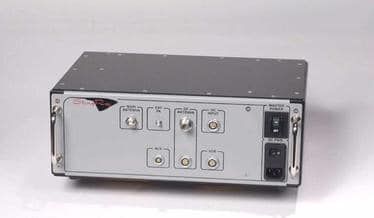He can hack your WhatsApp, find out where you are in 15 minutes and monitor your iPhone. But Tal Dilian says he’s one of the good guys. It’s badly-behaved governments who should be in trouble, not the $12 billion industry he’s come to represent.




On the heels of my latest New York Times OpEd, which is in print today on page 4 of the NYT Sunday Review, I’m excited to share my brand new book: The Futuresist Cure: Notes From the Front Lines of #Transhumanism. It’s a collection of my best essays on the future, many re-adapted, and many which have helped shape our movement. It’s #FREE today on Amazon in #Kindle. Or get the paperback version. There’s a foreword by the late Jacque Fresco. Download the book for FREE today!
Enter your mobile number or email address below and we’ll send you a link to download the free Kindle App. Then you can start reading Kindle books on your smartphone, tablet, or computer — no Kindle device required.
Given that going viral on the Internet is often cyclical, it should come as no surprise that an app that made its debut in 2017 has once again surged in popularity. FaceApp applies various transformations to the image of any face, but the option that ages facial features has been especially popular. However, the fun has been accompanied by controversy; since biometric systems are replacing access passwords, is it wise to freely offer up our image and our personal data? The truth is that today the face is ceasing to be as non-transferable as it used to be, and in just a few years it could be more hackable than the password of a lifetime.
Our countenance is the most recognisable key to social relationships. We might have doubts when hearing a voice on the phone, but never when looking at the face of a familiar person. In the 1960s, a handful of pioneering researchers began training computers to recognise human faces, although it was not until the 1990s that this technology really began to take off. Facial recognition algorithms have improved to such an extent that since 1993 their error rate has been halved every two years. When it comes to recognising unfamiliar faces in laboratory experiments, today’s systems outperform human capabilities.
Nowadays these systems are among the most widespread applications of Artificial Intelligence (AI). Every day, our laptops, smartphones and tablets greet us by name as they recognise our facial features, but at the same time, the uses of this technology have set off alarm bells over invasion of privacy concerns. In China, the world leader in facial recognition systems, the introduction of this technology associated with surveillance cameras to identify even pedestrians has been viewed by the West as another step towards the Big Brother dystopia, the eye of the all-watching state, as George Orwell portrayed in 1984.

A wireless, wearable monitor built with stretchable electronics could allow comfortable, long-term health monitoring of adults, babies and small children without concern for skin injury or allergic reactions caused by conventional adhesive sensors with conductive gels.
The soft and conformable monitor can broadcast electrocardiogram (ECG), heart rate, respiratory rate and motion activity data as much as 15 meters to a portable recording device such as a smartphone or tablet computer. The electronics are mounted on a stretchable substrate and connected to gold, skin-like electrodes through printed connectors that can stretch with the medical film in which they are embedded.
“This health monitor has a key advantage for young children who are always moving, since the soft conformal device can accommodate that activity with a gentle integration onto the skin,” said Woon-Hong Yeo, an assistant professor in the George Woodruff School of Mechanical Engineering and Wallace H. Coulter Department of Biomedical Engineering at the Georgia Institute of Technology. “This is designed to meet the electronic health monitoring needs of people whose sensitive skin may be harmed by conventional monitors.”

NLP.
Cell-site simulators, also known as Stingrays or IMSI catchers, are devices that masquerade as legitimate cell-phone towers, tricking phones within a certain radius into connecting to the device rather than a tower.
Cell-site simulators operate by conducting a general search of all cell phones within the device’s radius, in violation of basic constitutional protections.
Law enforcement use cell-site simulators to pinpoint the location of phones with greater accuracy than phone companies. Cell-site simulators can also log IMSI numbers (unique identifying numbers) of all of the mobile devices within a given area. Some cell-site simulators may have advanced features allowing law enforcement to intercept communications or even alter the content of communications.


The machine learning models that can detect our face and movements are now part of our daily lives with smartphone features like face unlocking and Animoji. However, those AI models can’t predict how we feel by looking at our face. That’s where EmoNet comes in.
Researchers from the University of Colorado and Duke University have developed the neural net that can accurately classify images in 11 emotional categories. To train the model, researchers used 2,187 videos that were clearly classified into 27 distinct emotion categories including anxiety, surprise, and sadness.
What if neither distance nor language mattered? What if technology could help you be anywhere you need to be and speak any language? Using AI technology and holographic experiences this is possible, and it is revolutionary.
Microsoft has created a hologram that will transform someone into a digital speaker of another language. The software giant unveiled the technology during a keynote at the Microsoft Inspire partner conference this morning in Las Vegas. Microsoft recently scanned Julia White, a company executive for Azure, at a Mixed Reality capture studio to transform her into an exact hologram replica.
The digital version appeared onstage to translate the keynote into Japanese. Microsoft has used its Azure AI technologies and neural text-to-speech to make this possible. It works by taking recordings of White’s voice, in order to create a personalized voice signature, to make it sound like she’s speaking Japanese.
Microsoft has shown off holograms of people before, but the translation aspect is a step beyond what has been possible with HoloLens. This looks like it’s just a demonstration for now, and you’d need access to a Mixed Reality capture studio to even start to take advantage of this. Microsoft’s studios are equipped with lighting rigs and high-resolution cameras to capture a fully accurate digital hologram of someone, which isn’t something that can be done easily at home with a smartphone just yet.

The financial-technology boom that turned China into the world’s biggest market for electronic payments is now changing how banks interact with companies that drive most of the nation’s economic growth. As MYbank and its peers crunch reams of new data from payment systems, social media and other sources, they’re growing more comfortable with smaller borrowers that they previously shunned in favor of state-owned giants.
Jack Ma’s online bank is leading a quiet revolution in the way China lends to small businesses, taking aim at a credit bottleneck that has held back Asia’s largest economy for decades.
Using real-time payments data and a risk-management system that analyzes more than 3,000 variables, Ma’s four-year-old MYbank has lent 2 trillion yuan ($290 billion) to nearly 16 million small companies. Borrowers apply with a few taps on a smartphone and receive cash almost instantly if they’re approved. The whole process takes three minutes and involves zero human bankers. The default rate so far: about 1%.